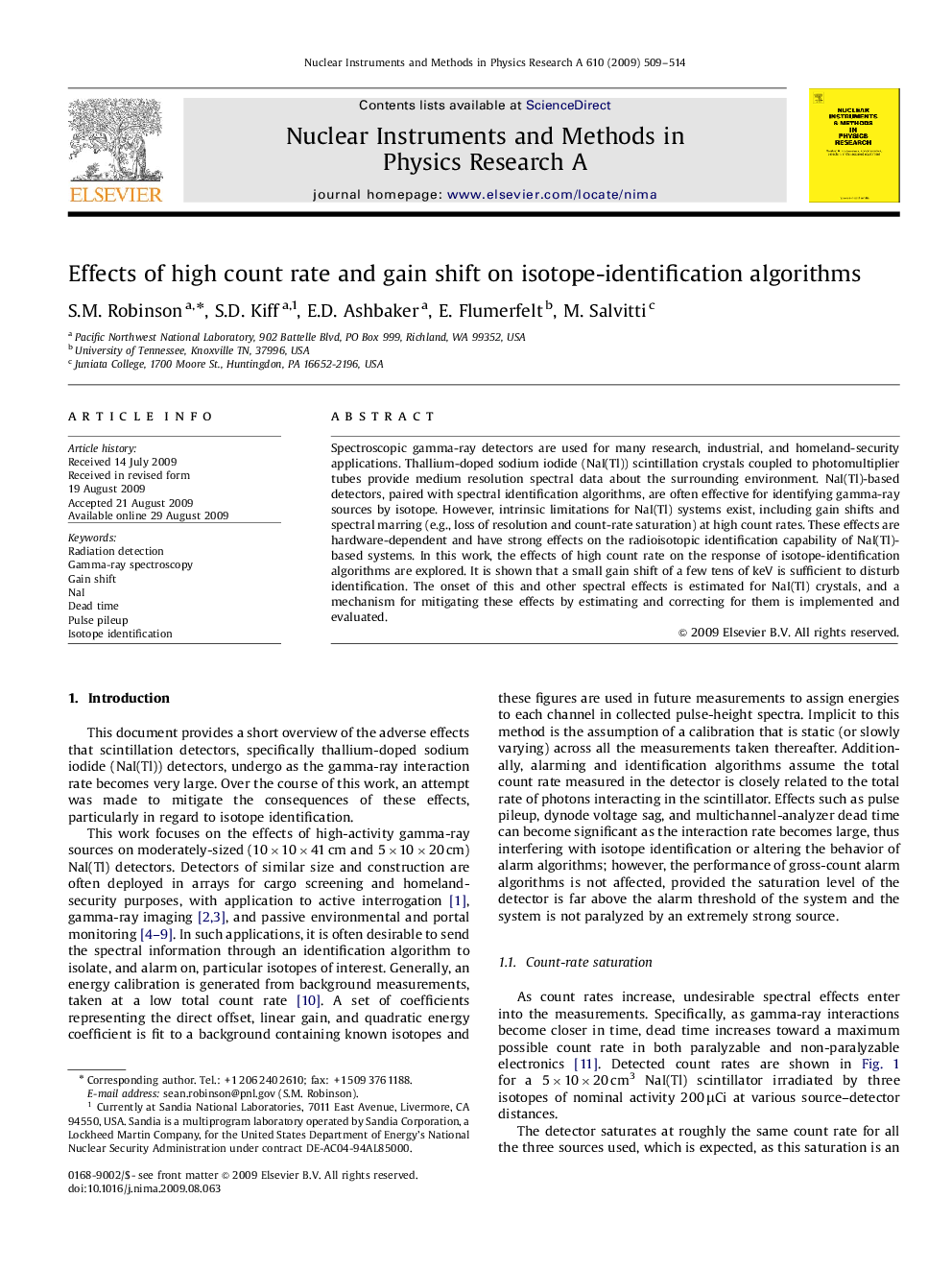| Article ID | Journal | Published Year | Pages | File Type |
|---|---|---|---|---|
| 1827534 | Nuclear Instruments and Methods in Physics Research Section A: Accelerators, Spectrometers, Detectors and Associated Equipment | 2009 | 6 Pages |
Spectroscopic gamma-ray detectors are used for many research, industrial, and homeland-security applications. Thallium-doped sodium iodide (NaI(Tl)) scintillation crystals coupled to photomultiplier tubes provide medium resolution spectral data about the surrounding environment. NaI(Tl)-based detectors, paired with spectral identification algorithms, are often effective for identifying gamma-ray sources by isotope. However, intrinsic limitations for NaI(Tl) systems exist, including gain shifts and spectral marring (e.g., loss of resolution and count-rate saturation) at high count rates. These effects are hardware-dependent and have strong effects on the radioisotopic identification capability of NaI(Tl)-based systems. In this work, the effects of high count rate on the response of isotope-identification algorithms are explored. It is shown that a small gain shift of a few tens of keV is sufficient to disturb identification. The onset of this and other spectral effects is estimated for NaI(Tl) crystals, and a mechanism for mitigating these effects by estimating and correcting for them is implemented and evaluated.
